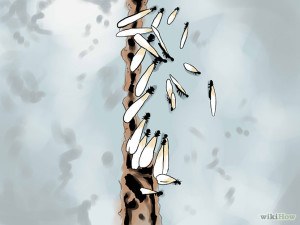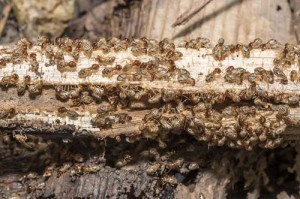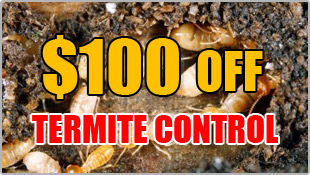
There are many different types of wood-boring insects so it is essential that you know how to distinguish termites from other household pests such as the carpenter ant. The first step is to identify whether you are dealing with Termites in Phoenix. Termites are very small, but upon close examination, one can see that they have straight antennae as opposed to the elbowed antennae of the carpenter ant for which they are often mistaken. Another characteristic unique to termites in Phoenix is that they are often a pale yellow color and have soft bodies. They also have no discernable waist along the segmented portion of their bodies unlike the carpenter ant. If the termite colony is already large enough you may even see the winged version of these Phoenix termites. Winged- termites have 2 sets of wings of the same size whereas a carpenter ant has front wings that are much larger than the rear set. Knowing these characteristics will help you identify whether you have been hit by the infamous termite or their lesser known competitors.
Sometimes it is hard to know if the is damage is from termites simply because the little critter has gone invisible. When this happens you can use other visual clues to detect a termite infestation. The most common clues are the following:

Another way to inspect for possible termite damage to your Phoenix home is to cut away a piece of wood from the suspected site. Termite damage causes wood to be become fragile and easily broken and the wood will very likely pull away with the slightest force.
We here at Varsity Termite and Pest Control Specialize in detecting and treating in Phoenix for these pesky little creatures so if you don’t want to have to go thru the steps to determine whether you have Termites we can do that for you. Contact us and we will come out and inspect your Phoenix home for Termites.
Published By:
Varsity Termite and Pest Control – Tony Kaufman
Office: 602-757-8252
Website: https://varsitytermiteandpestcontrol.com


© Varsity Termite and Pest Control - Google - Privacy Policy